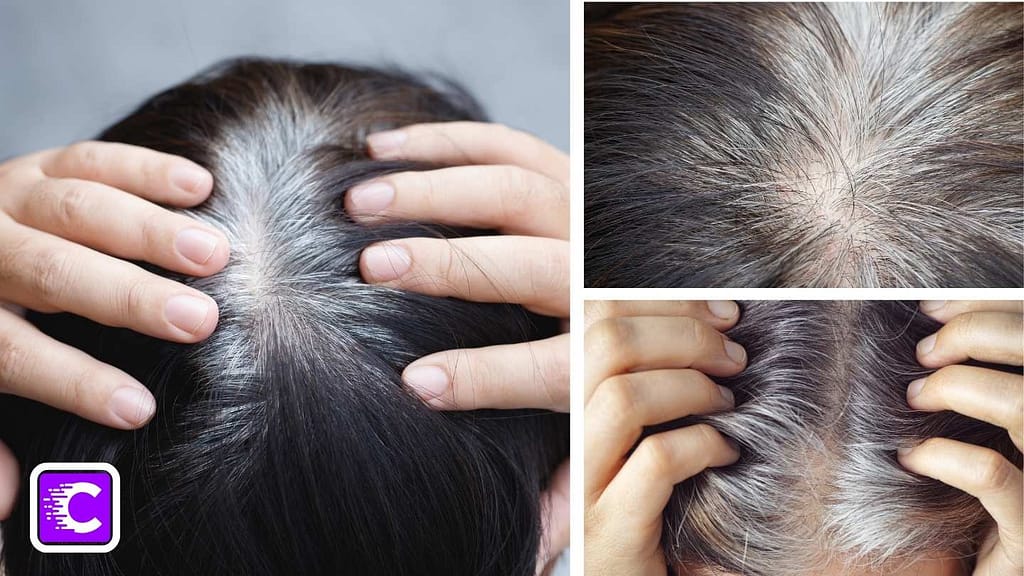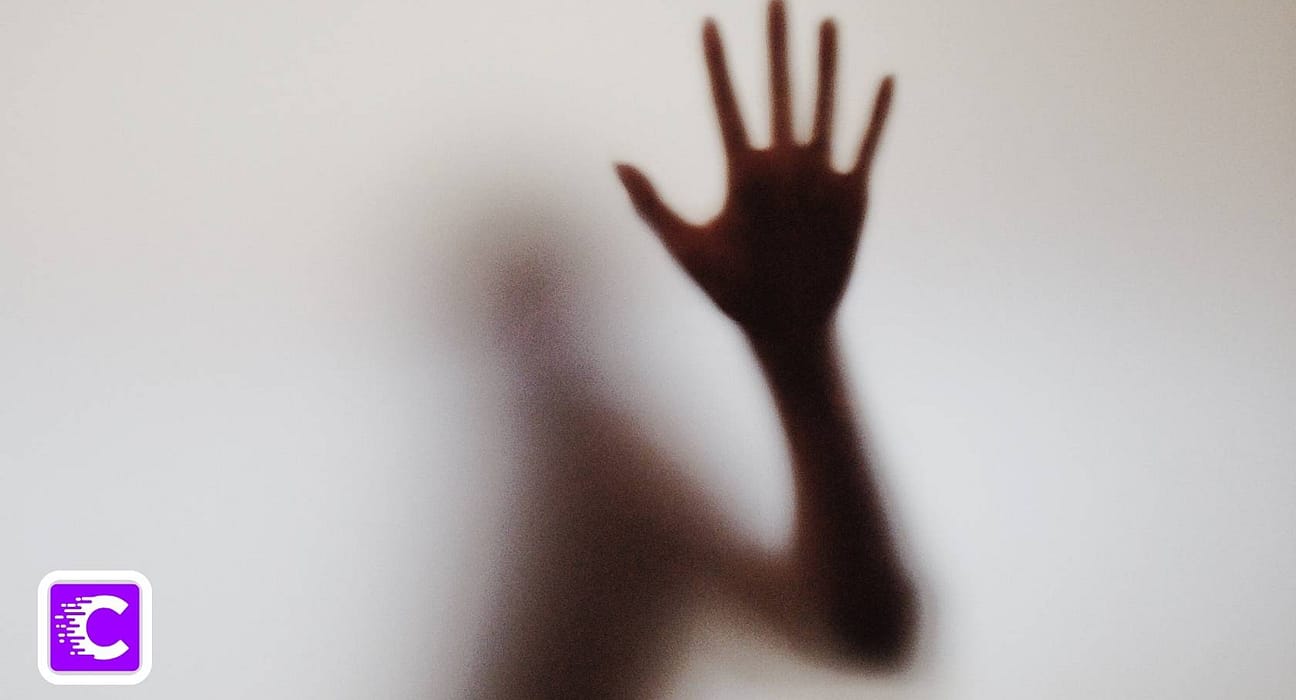Last updated on October 4th, 2024 at 01:29 pm
Left-handers have been misinterpreted and feared throughout history. They were often outlined as dangerous and sinister in society and popular culture. Movies portrayed left-handed characters as villains — while superstitions titled them as “bringers of bad luck”. These myths have established a sense of unease around left-handers, leading to biased stereotypes of them as psychos or threats.
I know you are hear to learn some scary facts about lefties. The reasons may be that you are a left-handed person (or someone in your family) or friends circle is lefty and wants to know some scary facts about them. You got covered!
In this blog post, we will explore 25 scary facts about left-handers that may surprise you!
Why this blog post?
I am also a left-handed person who wanted to know some facts about lefties and I searched on Google and found a few articles and everybody is talking about the same thing. There is no uniqueness or exploration of the surprising, scary things about left-handed people.
Then, I thought to research well to find out some cool facts about left handers that no one mined and shared online. So, I could understand myself as a left handed person and can share that unique information about lefties with you as well.
Here is my guarantee of reliability and Sources
I guarantee that the facts provided in this post are backed by multiple trusty sites like the National Library of Medicine, Psychology Today, Healthline and New Scientist, and more 22 most trusted sources. (links given at bottom)
At the end of this post, you will gain some unique information that no one shared so far.
Introduction:
You know approximately 10% of the world’s population is left-handed. There are more and more fascinating and even spooky facts spread in the ancient history of mankind and even spreading today about this minority group.
From historical superstitions to surprising scientific findings, left-handers have long been subjected to misconceptions and intriguing revelations. They have struggled because of their left-handedness in all areas of social life. But present, you may feel that much, but still visible in rural or underdeveloped countries and villages.
Scary Facts About Left-Handers
Now we are changing our route to the darker side, I mean to the scary facts about left-handers.
1. Lefties Face Premature Graying

There is a general misconception that left-handed individuals are more susceptible to premature graying and also early baldness. Nevertheless, comprehensive research has not found any scientific proof to assist this claim. Studies investigating the relationship between handedness and hair characteristics, including genetics, hormones, and brain lateralization, have yet to prove any significant correlation.
Handedness and brain lateralization are separate biological processes. While researchers continue to investigate the factors influencing handedness, it seems to have no effect on hair color or hair loss. Data from reputable sources such as the National Institutes of Health (NIH), the American Academy of Dermatology (AAD), and the International Journal of Trichology indicate that no connection has been found between left-handedness and hair health.
In summary, left-handedness does not lead to premature graying or early baldness, as suggested by the scientific community. [1, 2, 3]
2. Left-handedness is a Punishment from God

In the ancient civilizations of Rome, Greece, China, Egypt, and Mesopotamia right-handedness was prevalent. There is a reason for that too. Someone’s right side was considered an honor, also the right hand was used for ceremonies, eating, giving, handing over, etc. The most interesting thing is, that Mesopotamians believed someone was left-handed because of the punishment from God.
(Source: Coren S. Advances in Psychology. Vol. 67. Left-Handedness: Behavioral Implications and Anomalies. North Holland: Elsevier; 1990.)
3. Halpern and Coren’s ‘Death Theory’ of Left-Handers
In 1991, a study by Halpern and Coren suggested that left-handed individuals die nine years earlier than right-handed. Whereas, subsequent research did not support this claim. It is due to historical shifts in reported rates of left-handedness.
The original study, based on 2,000 cases in Southern California, found left-handers to die younger. However, when accounting for changing rates of left-handedness reporting, the supposed nine-year gap was not statistically significant. The natural rate of left-handedness is estimated at around 10-11%, but cultural influences have historically suppressed this figure.
This highlights the importance of considering past reporting biases in epidemiological studies to ensure accurate interpretations. [ 4,5,6]
4. In Japan, if a Woman is Left-handed, it’s a Reason for Divorce

In traditional Japanese culture, being left-handed was often associated with superstitions and considered to bring bad luck. if a woman was left-handed—it was considered a reason for her husband to ask for a divorce. Then, natural left-handers might have encouraged or been forced to switch to right-handedness.[7]
5. Left-handers Face Sleep Disorders
In health, research has shown that a significant correlation exists between various health aspects like memory function, psychiatric disorders, sleep patterns, and mortality rates. As shown in a study of 970 patients, left-handed individuals with sleep apnea share similar risk factors and tend to exhibit a higher respiratory disturbance index (RDI) compared to their right-handed counterparts. Recent research indicates that—left-handed individuals who encounter rhythmic movements during sleep are more prone to bilateral movements.[8,9]
Also Read: 30 Surprising Facts About Bad Handwriting
6. Accused of Witchcraft or Engaging in Occult Practices
During the Middle Ages, left-handed individuals were frequently accused of witchcraft —or being involved in occult practices. This belief stemmed from the prevailing superstitions and misconceptions of that time, associating left-handedness with evil and supernatural powers. The societal bias against left-handed people often led to their persecution and discrimination, reflecting the widespread fear and prejudice towards anything perceived as different or unconventional. [10]
7. Scary Discrimination of Lefty Students in Catholic Schools

It’s considered a scary things that, in the 1960s and 1970s, Catholic school teachers often subjected left-handed students to corporal punishment and psychological pressure. These discriminatory practices in Catholic schools included accusing left-handed individuals of being associated with the Devil —or even being labeled as ‘Communists.’ Such treatment not only reflects the superstitions prevalent during that era but also highlights the ignorance and bias that existed towards left-handedness in educational settings.[11]
8. The Oppression of Left-Handedness in Soviet Bloc Countries
Soviet bloc countries, such as Spain, Italy, Yugoslavia, and others behind the Iron Curtain, enforced oppressive policies against left-handers until as late as the 1970s? Yes, that’s true. These policies mandated right-handed writing in schools, suppressing the natural inclination of individuals to use their dominant hand—and enforcing conformity through education.[12]
9. Left-Handedness Banned in Albania
The Serbian Scientific Journal published article “Historical Aspects of left-handedness” reveals that Albania went to extreme lengths by banning left-handedness entirely, even going as far as making it illegal.
During this time, being left-handed in Albania was deemed a punishable offense. However, there is no data available about the period or year this was prevalent in Albania. Maybe in the ancient period, can’t see this today.[13]
10. The fear of left-handers is known as “Sinistrophobia.”

Sinistrophobia is a term used to describe the fear or discrimination against left-handed individuals. You know, throughout history, left-handedness has been associated with negative connotations such as weakness, evil—and unhealthiness.
This bias against left-handers has led to societal pressure to conform to right-handedness. Despite increasing acceptance of left-handedness in modern times—remnants of this discrimination can still be observed in everyday life.[14]
11. Psychic Powers of Left-Handers
Some ancient cultures believed that left-handed people had psychic abilities and were connected to the supernatural realm. This belief can be seen in many historical records and folklore. Left-handed people are often believed to have special powers. Also, has a certain association with spiritual forces.
Contrary, in some societies, being left-handed is also considered to be a blessing from God and heightened intuition.[15]
12. Islam Considered it Impolite or Offensive to use Left Hand
In some Islamic cultures, using the left hand is considered immodest or disrespectful. The Saudis, for example, maintain a strict separation between hand actions according to Islamic principles. The left hand is reserved for tasks such as removing dirt, blowing the nose, and cleaning,— whereas the right hand is for eating, shaking hands and passing things.
Also in Muslims, it recommends to use the right foot to enter the mosque. So it’s customary to use both hands when gesturing to touch people and give things. Using only the left hand is considered casual or/ informal. It emphasizes the cultural importance of hand use in society.[16,17]
13. Left-handedness as an Indicator of Health Risks

This is one of the scary facts about left handed females. Left-handedness may be an indicator of intrauterine exposure to estrogens, potentially increasing the risk of breast cancer.
A study following women (n=1786) from a 1981 health survey in Busselton found that left-handed individuals had a higher risk of breast cancer compared to right-handers. The risk was particularly elevated for post-menopausal breast cancer, with a hazard ratio of 2.59 and a 95% confidence interval of 1.11–6.03.
Despite representing only around 10% of the population, left-hand dominant individuals seem to face higher health risks for specific conditions, including breast cancer, brain tumors, periodic limb movement disorders, and psychotic disorders.[18,19]
14. Left-handedness Prevalent in Neurodiverse Individuals
Left-handedness and mixed-handedness are more prevalent in individuals with certain neurological conditions like schizophrenia, dyslexia, and autism spectrum disorder. About 28% of people on the autism spectrum are left-handers compared to 10% in the general population.
Genes controlling left/right body asymmetry also influence handedness, with some genes associated with handedness or dyslexia expressed in cilia. Cilia defects can lead to both body asymmetry and brain midline phenotypes, potentially playing a role in brain midline development, handedness, and dyslexia.
Higher rates of non-right-handedness have been reported in schizophrenia, contributing to theories of anomalous lateralization in this disorder.[20,21,22]
15. Left-handers at Twice the Risk of Inflammatory Bowel Disease
Research conducted on two national groups of people born in 1958 and 1970 in Great Britain revealed that—left-handers have double the risk of developing inflammatory bowel diseases such as Crohn’s disease and ulcerative colitis. The study involved approximately 17,000 individuals—whose handedness was identified at ages 7 or 10 based on writing and kicking preferences.
Left-handers showed a significantly higher likelihood of developing inflammatory bowel disease compared to righties, with adjusted relative odds of 2.13 for Crohn’s disease, ulcerative colitis, and inflammatory bowel disease. The association between left-handedness and IBD may stem from genetic and/or environmental factors, according to the study results.[23,24,25]
16. Higher Likelihood of Left-Handed Babies Born to Women Over 40

Research indicates that women above 40 years old have a higher chance of giving birth to left-handed babies compared to younger mothers (18-40 years). Studies from Canada, Britain, Australia, and the US show a positive link between left-handedness and birth stress.
Based on additional studies, including a 2008 Swedish research project involving mothers and their 5-year-old children—factors like challenging pregnancies, difficult deliveries, maternal depression or stress during pregnancy, low birth weight, advanced maternal age, and birth asphyxia have been associated with increased probability of having a left-handed child. This suggests a strong correlation between maternal health conditions and the likelihood of the child being left-handed.[26,27,28]
17. Left Handers are considered Evil in Ancient Cultures
Ancient cultures often associated left-handed people with “evil” and “unclean” spirits. The reason for these negative connotations is that left-handed people are rare compared to right-handed people. This vision affects restless movements originating from the left side of the body. Common beliefs suggest that—only left-handed people have their “right mind”, reflecting the idea that the right hemisphere of the brain controls the left side of the body.[29]
18. Violence, aggression and Criminal Tendencies

Ancient societies often associated left-handedness with violence, aggression—and criminal tendencies. Studies suggested a link between being left-handed and aggression, but findings were mixed. For example—research showed that left-handed juvenile offenders displayed lower violence potential scores than their right-handed counterparts.
A notable Australian study—found ‘no significant impact’ of handedness on mental health disorders, criminal behavior, or substance abuse. Interestingly, studies revealed a positive correlation between left-handers’ prevalence and homicide rates in traditional societies. It varies from 3% in peaceful communities to 27% in aggressive societies. This connection hints at a frequency-dependent selection process that sustains left-handedness in such populations.[30,31]
19. Decline in Left-Handedness: Blame the Right-Handers
Recent research by Matz Larsson, Astrid Schepman, and Paul Rodway indicates that the reason for the drop in left-handedness can be attributed to the historical advantage right-handers had in combat situations. Right-handers kept a superior position in combat due to the anatomical vulnerability of the left side of the chest—where most of the heart is located.
Attacks from right-handers targeted this exposed area, giving them(right-handers) a strategic edge over left-handers. The option of which hand to hold weapons with determined the level of vulnerability, with left-handed individuals being at a disadvantage.
This fighting hypothesis sheds light on the decrease in left-handed individuals over time and the prevalence of right-handedness in the population.[32,33]
20. Prevalence of Left-handedness and Neurological Insults
Among individuals who have experienced prenatal stress, birth complications, or childhood brain injuries, research indicates a higher prevalence of left-handedness. Cases of left-handedness have been associated with damage to the left hemisphere during early development. Also, babies with low Apgar scores at birth tend to be left-handed.
Over the past 50 years, there has been a significant increase in left-handedness among mentally challenged, epileptic, and cerebral palsy individuals compared to the general population. This suggests an association between neurological insults and left-handedness.
Studies conducted by Bakan in 1971, 1977, and 1978 indicated that birth stress played an important role in the development of left handedness, with a higher occurrence in first-born or fourth-born and later individuals who are more prone to birth-related complications. While some research supports a connection between handedness and birth order, conclusive evidence is still awaited.[34,35,36]
21. Left-Handedness and Depression

Left-handed individuals, who comprise about 10% of the U.S. population, face a slightly increased risk of developing mental health disorders—such as depression and anxiety. Research has shown that roughly 11% of patients diagnosed with mood disorders like depression and bipolar disorder are left-handed—this closely matches the general percentage of left-handed individuals in the population.
A recent study across 12 European countries discovered that left-handers have a higher likelihood of experiencing depressive symptoms compared to right-handers. Specifically, left-handers are about 5% more likely to report symptoms of depression, representing roughly 27% of the total sample.[37,38]
22. Beliefs Regarding the Left Hand in Various Cultures
Amidst diverse cultures worldwide, the left hand has been historically connected to bad luck and deemed taboo in social customs. Actions such as passing items to a left-handed person with the left hand are assumed to bring misfortune or curses. In Scotland, encountering a left-handed individual at the start of a journey is considered unlucky.
Equally, in Ghana, using the left hand for gestures or giving and receiving objects is seen as impolite. Superstitions extend to everyday actions like refraining from using the left hand for toasts or stepping out of bed with the left foot first. Sensations like an itch on the left palm, ringing in the left ear, twitching in the left eye—or finding coal under the left foot are seen as omens of bad luck in several cultures.
This negativity linked to the left hand even stretches to beliefs around Satanism, regularly associated with the historical connection to the “left-hand path.”[39,40,41]
23. High Possibility of PTSD Symptoms in Left Handers

In a 2007 study published in the Journal of Traumatic Stress—nearly 600 individuals were screened for post-traumatic stress disorder (PTSD). Among the 51 individuals meeting the criteria for a possible PTSD diagnosis, a higher prevalence of left-handedness was observed.
Furthermore, left-handed individuals exhibited significantly higher scores in arousal symptoms related to PTSD. The authors of the study highlighted that the correlation between left-handedness and PTSD symptoms could be a significant finding among individuals affected by PTSD.[42]
24. Lefties are Hight Alcohol Consumers
A study published in the British Journal of Health Psychology in 2011 involving 27,000 self-reported participants found a link between increased alcohol use and left-handers. This study suggests that alcohol use disorder is more common among left-handed people. Especially in male alcoholics than in the general population.
Previous research by Bakken (1973) and Chayette Smith (1981) also found a significant association between left-handedness and alcohol abuse. They suggest that more research is needed in this area.[44,45,46,47,48]
25. The Origin of the Word “Sinister”

The word “sinister” is derived from the Latin word “sinestra,” which translates to “left.” In ancient Roman culture, the left side was often associated with negativity and distrust. This negative connotation of the left hand later evolved into the modern-day interpretation of “sinister” as somewhat evil or threatening. The historical stigmatization of left-handedness has contributed to the perception of the left side as being less favorable in various cultures throughout history. [49]
Conclusion
In conclusion, these scary facts about left-handers have shed light on the fascinating aspects of left-handed individuals. It highlighted their exceptional abilities in complex reasoning and divergent thinking. The notable achievements of left-handed Nobel Prize winners, writers, artists, musicians, mathematicians, physicists, and architects—further emphasize the remarkable capabilities of left-handers. I trust that the information in this post has been insightful and offered valuable insights into the lesser-known attributes of left-handed individuals.
Share this post with your friends and family to spread awareness about the scary and unique facts of left-handed people.
Thank you for taking the time to read this content.




